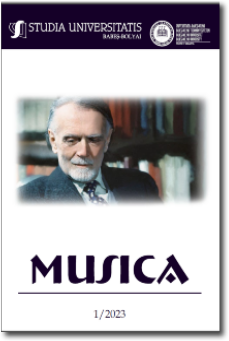ZOLTÁN KODÁLY’S ART IN TERMS OF JAZZ ANALYSIS OF EPIGRAM 7
ZOLTÁN KODÁLY’S ART IN TERMS OF JAZZ ANALYSIS OF EPIGRAM 7
Author(s): Attila BlahoSubject(s): Music, Recent History (1900 till today), History of Art
Published by: Studia Universitatis Babes-Bolyai
Keywords: jazz; chords; alterations; upper extensions;
Summary/Abstract: Jazz music and twentieth-century compositional music have interacted since the beginning. In the same way that one cannot talk about modern music today without mentioning Béla Bartók, his colleague and good friend Zoltán Kodály, also plays an important role in twentieth-century music. The compositional techniques that we associate with Bartók's name can also be found in Kodály's art. In this study, I scrutinize Zoltán Kodály's less well-known play, the 7th Epigram. Kodaly's suggestion on the preface sounds like this: The vocal part can be performed on any string or wind instrument, possibly in the upper or lower octave. It works best for those who use it as reading practice by accompanying their singing. As a jazz musician, compositional music has always influenced me, and I was curious to compare the harmonic relationships between the two styles. It affected me as a revelation when I discovered in the works of Johann Sebastian Bach those seventh chords or alterations that can also be found in the language of jazz. Kodály's Epigrams became interesting for me precisely because of this.
Journal: Studia Universitatis Babes-Bolyai - Musica
- Issue Year: 68/2023
- Issue No: 1
- Page Range: 29-35
- Page Count: 7
- Language: English

